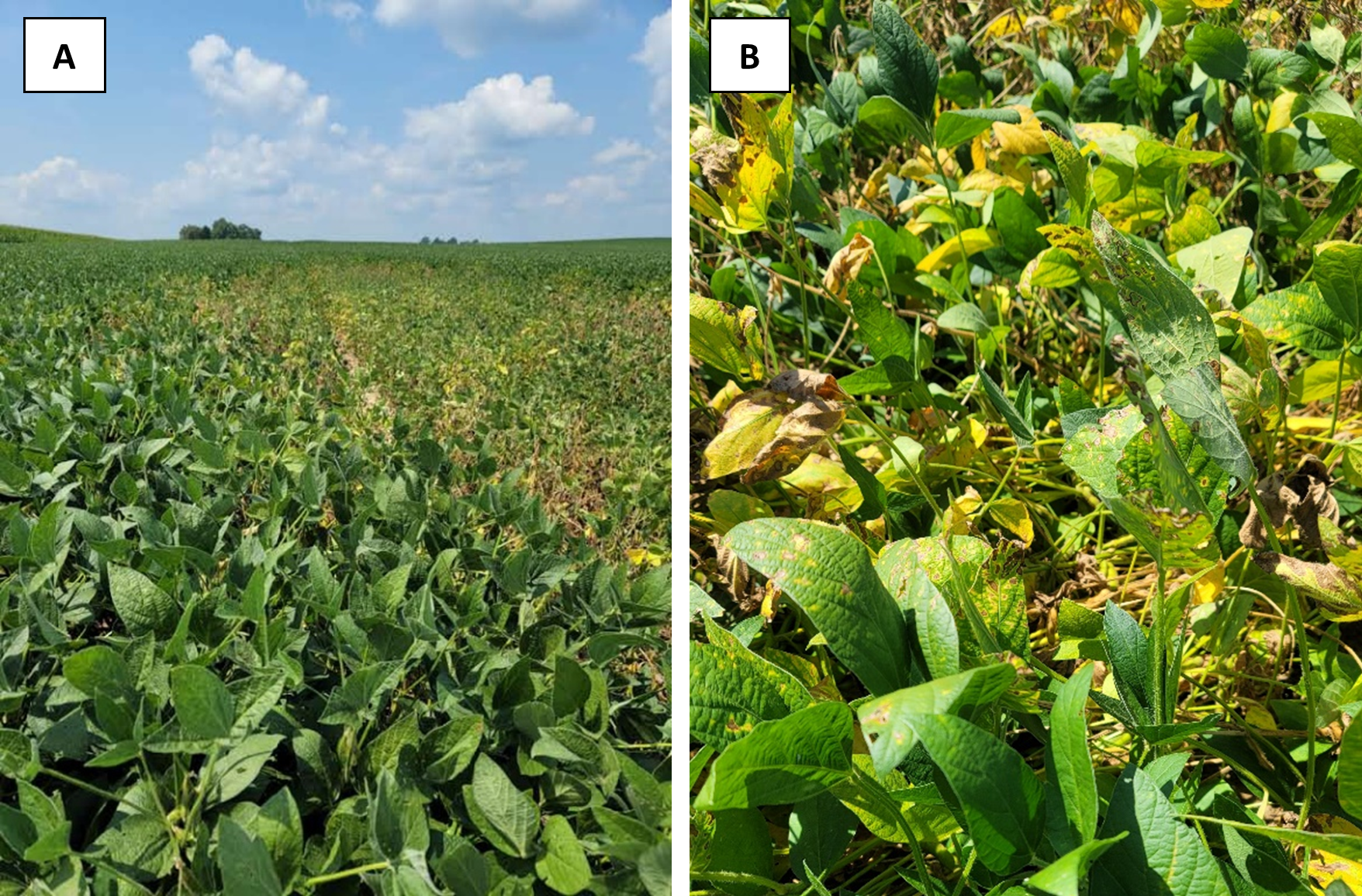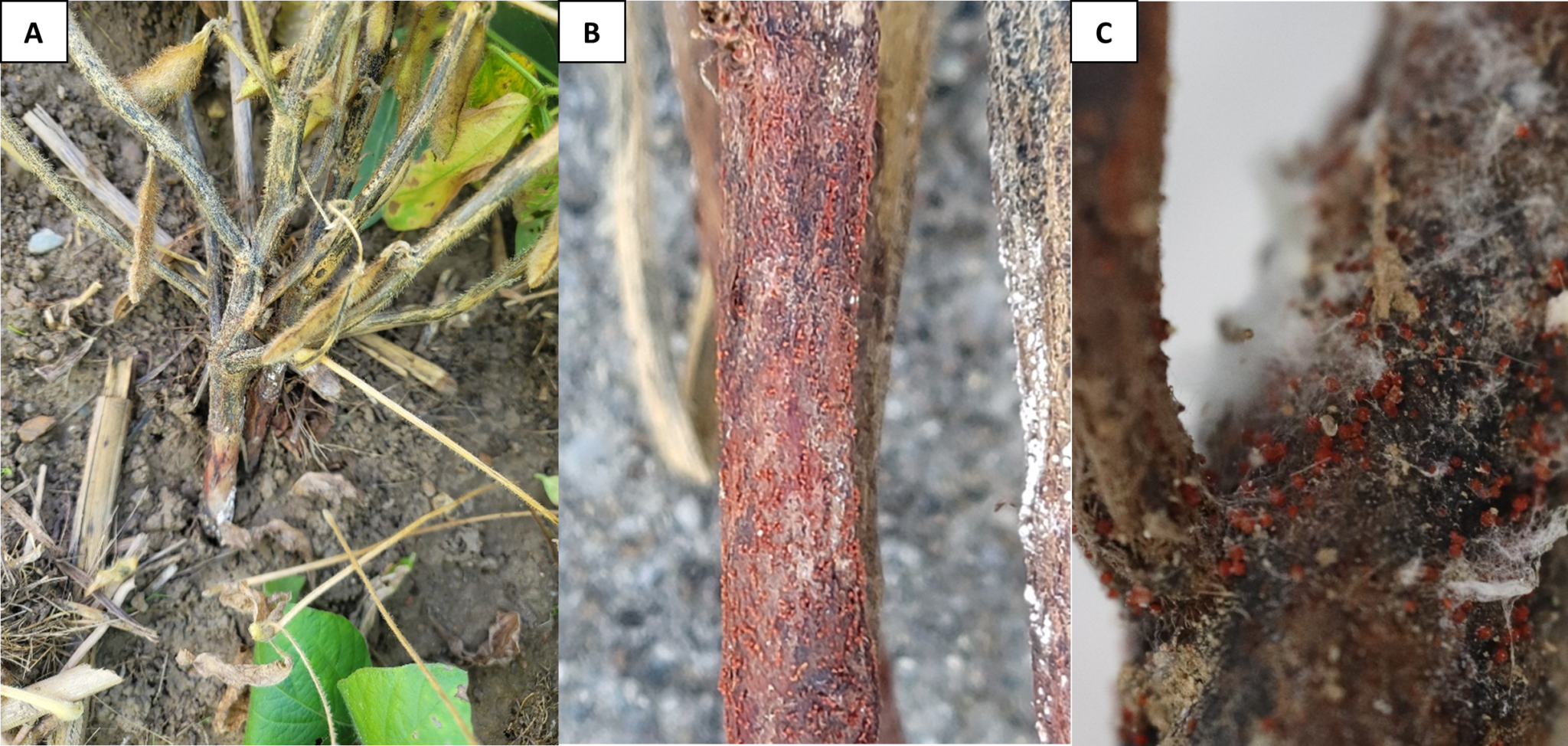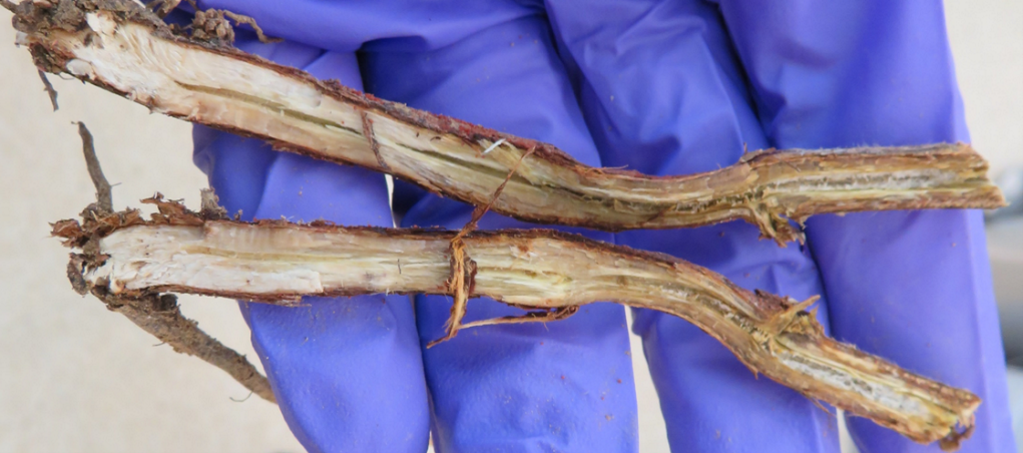Red crown rot of soybean has become a new concern this season in Indiana after a few localized occurrences have been found this year. This disease is caused by the soilborne fungus, Calonectria ilicicola. At this point in the field season, we are on the hunt to determine how widespread the issue may be here in Indiana. Therefore, we need your help in documenting red crown rot and collecting samples.
What to look for: The disease may appear in patches in a field similar to our other soilborne diseases such as sudden death syndrome (SDS) and brown stem rot (Figure 1A). Early foliar symptoms may also mimic these diseases, which include chlorosis (yellowing) and necrosis of leaf tissue between leaf veins (Figure 1B). Therefore, it is important to take a few plant samples and check out the stem to verify the issue. Red crown rot will cause a red discoloration of the lower stem near the soil-line, and red, spherical perithecia may be visible, but are not always present (Figure 2). Rhizoctonia crown rot can also cause external brown to brown-red lesions on the stem. If you cut open the stem the central pith may have a gray discoloration (Figure 3), roots are rotted and the plants are easily pulled up from the soil.

Figure 1. A: Discolored patch of soybean plants infected by red crown rot. B: Chlorosis and necrosis symptoms in soybean leaves. (Photo Credit: Darcy Telenko)

Figure 2. A: Red discoloration at the crown of the soybean plants in the field, B and C: red, spherical perithecia forming on crown and stem. (Photo Credits: Darcy Telenko and John Bonkowski)

Figure 3. Sample processing in the lab and gray discoloration that may be seen in pith. (Photo Credit John Bonkowski)
We are working with colleagues across the mid-west to track this disease. Samples of soybean infected with red crown rot will greatly assist us in determining the distribution of red crown rot and guide future research.
We greatly appreciate the samples that we have received this season and want to encourage you to get out and look at these suspect areas in your fields.
If you have (or think you have) red crown rot in your field, please collect several plants (between 4-8) showing the symptoms and send them to the Purdue Plant Pest Diagnostic Laboratory (PPDL). Please dig up, do not pull, the plants up that you intend on submitting.
Please ship early in the week. If you are sending samples from multiple locations, please label them and provide the date collected, variety, field zip code or county, and previous crop. Please also send photos via email of the affected areas in the field and closeups of the plants you intend on shipping.
Mail to: Plant and Pest Diagnostic Laboratory
Purdue University
915 Mitch Daniels Blvd
LSPS Rm 116
West Lafayette, Indiana 47907-2054
Research funding from the Indiana Soybean Alliance is supporting sample processing, therefore there will be no charge for soybean samples submitted to the clinic.
Questions please contact Darcy Telenko (dtelenko@purdue.edu/764-496-5168) or PPDL (ppdl-samples@purdue.edu/765-494-7071)


